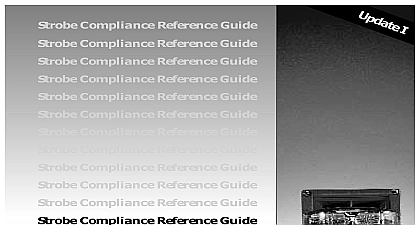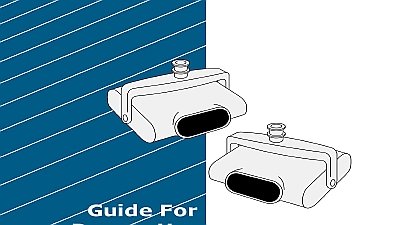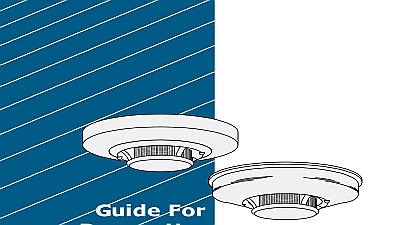System Sensor Application Guide for Proper Use of Projected Beam Smokes

File Preview
Click below to download for free
Click below to download for free
File Data
| Name | system-sensor-application-guide-for-proper-use-of-projected-beam-smokes-3540261879.pdf |
|---|---|
| Type | |
| Size | 870.86 KB |
| Downloads |
Text Preview
Guide For Use SENSOR Manuals Online FOR PROPER USE OF DETECTORS IN DUCT APPLICATIONS EDITION PURPOSE Glossary of Terms Introduction Characteristics of Smoke in HVAC Systems Duct Smoke Detection Equipment Typical Air Handling Systems How Duct Detection Systems are Used to Smoke Procedure for Duct Detector Application Installation Maintenance and Service of Detectors for Use Ducts 3 6 9 Manuals Online purpose of this guide is to provide much needed information concern the proper use of smoke detectors in duct applications Duct mounted smoke are designed to provide a specific type of protection that cannot be by any other type of system However there has been a tendency to these devices in the past attempting to use them as a substitute for early warning smoke detection system This fact coupled with new methods of smoke in ducts has prompted the writing of this industry guide Protection Engineers Mechanical and Electrical Engineers Fire Alarm designers and installers should find the contents both educational and information is intended as a technical guide as distinct from manda requirements Manuals Online 1 OF TERMS Air Sampling Detector extremely sensitive smoke detection device that sample test and evaluate the amount of particle within an air sample Area Smoke Detector device that will detect visible or invisible particles of Also called a spot type detector Coil cooling or heating element made of pipe or tubing Coil direct expansion using the direct refrigeration method CFM volume of flow cubic feet per minute Damper valve or plate regulating the flow of air or other fluid Damper multiple louver A damper having a number of adjustable blades used Duct Duct Smoke Detector vary the volume of air passing through a confined by varying the cross sectional area passageway made of sheet metal or other suitable not necessarily leak tight used for conveying or other gas at low pressures device located within the duct protruding into the or located outside the duct that detects visible or particles of combustion flowing within the duct of the device may allow operation of certain functions Exhaust Tube a round tube that provides a path for sampled to return from the detection device to the duct Fan air moving device comprising a wheel or blade and housing or orifice plate Humidifier device to add moisture to the air Inch of Water unit of pressure equal to the pressure exerted by a of water at a temperature of 4.0 39.2 Manuals Online Ionization Detector smoke detector using the principle of ion flow within a to detect visible and invisible particles of com within a size range normally encountered as a of fire Light Beam Detector smoke detection device that operates on the smoke principle Photoelectric Detector smoke detector using the principle of optical detection of particles of combustion Pitot Tube device used to measure the total pressure of a fluid It is essentially a tube attached to a manometer at end and pointed upstream at the other Pressure normal force exerted by a homogenous liquid or gas unit of area on the wall of a container Pressure Differential pressure difference usually specified in inches of water two points in a duct Return Exhaust duct which is used to return the air to the HVAC center for conditioning Sampling Tube a round tube with holes that collects air from the and brings it to the detection device Smoke Detectors device used to automatically sense the presence of of combustion Stratification phenomenon where smoke or other gases travel in at different levels within the duct rather than being distributed throughout the duct Supply Duct duct which distributes conditioned air i e cooled cleaned humidified etc Manuals Online 2 OF DUCT SMOKE DETECTION and local safety standards and codes recognize the ability of air duct systems transfer smoke toxic gases and flame from area to area Sometimes smoke can of such quantity as to be a serious hazard to life safety unless blowers are shut and dampers are actuated The primary purpose of duct smoke detection is to prevent injury panic and property damage by reducing the spread of smoke Duct smoke detection can also serve to protect the air system itself from fire and smoke damage and can be used to assist in protection applications for example in the ventilation exhaust duct work of computers and tape drives 90A1 for the Installation of Air Conditioning and Ventilating specifies that Smoke Detectors listed for use in air distribution systems be located Downstream of the air filters and ahead of any branch connections in air supply of greater than 2,000 cfm 944 L sec capacity At each story prior to the connection to a common return and prior to any recircu or fresh air inlet connection in air return systems over 15,000 cfm 7080 capacity and serving more than one story No 1 Return system smoke detectors are not required when the entire served by the air distribution system is protected by a system of area smoke No 2 Fan units whose sole function is to remove air from inside the to outside the building more important is the identification of what duct smoke detection is not for rather than what it is It is NOT a substitute for an area smoke detector It is NOT a substitute for early warning detection It is NOT a replacement for a building regular fire detection system 90A Section 4 4.2 Manuals Online 90A supports this by stating provided by the installation of smoke detectors and other related is intended to prevent the distribution of smoke through the supply duct system and preferably to exhaust a significant quantity of smoke to the Neither function however will guarantee either early detection of fire or detection of smoke concentrations prior to dangerous smoke conditions if movement is other than through the supply air system 72 States that are installed in the air duct system shall not be used as a substi for open area protection of smoke laden air by clean air from other parts of the building or dilution outside air intakes may allow high densities of smoke in a single room with no smoke in the air duct at the detector location may not be drawn from open areas when air conditioning or ventilating are shut down smoke detectors are the preferred means of controlling smoke spread since smoke detectors can only detect smoke when smoke laden air is in the ductwork Fans may not be running at all times such during cyclical operation or during temporary power failure smoke detectors sample great volumes of air from large areas of They cannot be expected to match the detection ability of detectors contaminated air filters can restrict air flow causing a reduction in operating effectiveness of the duct smoke detectors DOCUMENTS are several important documents that provide guidance concerning the application and installation of duct detectors U L Standard 268A Standard for Smoke Detectors for Duct 1NFPA 90A Appendix A 4 4.2 2NFPA 72 Section 5 11.2 Manuals Online Systems NFPA Standard 90A 1989 Installation of Air Conditioning and Ventilat NFPA Standard 92A 1988 Smoke Control Systems NFPA Standard 72E 1990 Automatic Fire Detectors NFPA Standard 101 1988 Life Safety Codes ASHRAE Handbook and Product Directory 1984 Chapter 38 Smoke Control SCENARIOS smoke detection may be useful in preventing injury and property damage in such as the following heating ventilating or air conditioning HVAC fan motor overheats and


